Trouble-Free Border Crossings in Latin America
A week or so before we were to cross the Canadian-US border, we read a story of a couple of motorbike travellers who were denied access into the USA for the following reasons: they did not have jobs in Canada, they did not have proof of a return date, and, having sold their house, were of no fixed address. The US border control could not be convinced the two were simply living the dream - travelling the world by motorbike - and not trying to gain residence in America through the 'back door'.
While we still had an address in Canada we were, essentially, no different than these two. Thankfully, the U.S border control guards we dealt with were polite and friendly, if not extremely efficient, and having answered only a few relavent questions, we were free to pass.
Okay, okay... we speak the same language, we share cultural similarities, and Canadians and Americans cross freely the border by the thousands each day. But, it did get us thinking of the other 15 border crossings that lay ahead... what about the corruption and bribery that we've heard of? We don't speak Spanish. Do we need 'helpers'?
We have now crossed 15 borders and can provide some simple advice - as long as you approach the crossings with the right attitude and have a little knowledge in advance you shouldn't have any problems.
Here are the basic steps for all borders with specific focus on Central America.
Crossing every border with a vehicle is a two-step process: gain entry for yourself, then for your motorbike. You will need the following documents if you are from Canada (check for details on your country requirements).
Passport - for obvious reasons.
Driver's Permit - If you don't feel like handing over your original documents, we've 'heard' that good, laminated photocopies work, although some savvy border officials may insist on seeing the original, so keep it handy. An International Driver's Licences (which are simply a translation of your actual license) are also a good option, they can be purchased at AAA / CAA offices.
Vehicle Registration and /or Vehicle Title - depending on what you are issued in your area.
Vehicle Identification Number (VIN) - know where your VIN number is on your bike and make sure it is clean and legible when you cross.
Local Currency - many borders require a payment in local currency to process your papers, or payment for photocopies, or payment for fumigation of your bike - details below.
Step 1: MIGRACiON - The migration desk (or building or cubicle depending on the border crossing) will stamp your passport allowing you into the country. In the Americas you are typically granted 60-90 days as a tourist. This is easy and is usually quick even in the notoriously drawn out border crossings of Central America.
STEP 2: ADUANA - The aduana desk/office/cubicle provides you with a temporary import visa for your bike. Unlike a passport stamp, this process is long and tiresome but, loose your cool or attention to detail and it could cost you time and/or money. We've heard horror stories!
When you approach the aduana, you will need to show your stamped passport for the country as well as your owner's permit/registration and possibly your driver's permit. You (or they) will then fill out a form with the details of your bike such as license plate, brand, colour and, VIN number.
It is critical that __you __double check their work. Remember, you are temporarily importing the bike which means, when you leave you must prove that you have your bike with you. If your VIN number on the form does not match the number on your bike, they could question whether you've left your bike in the country illegally and either charge you huge import fees or send you back to the previous country to sort it out.
The documents you are provided at the point of entry must be kept and ready to show at police check points within that country. When you leave the country, you will hand back these documents to be stamped "out".
Of course Central America adds a whole other dimension to border crossings!
HELPERS
For starters, don't be surprised if, when you pull up to that magic line, a group of 5 or 6 (or 20) young men run toward you offering their services to help you cross the border. We have even been told by some of these so-called "helpers" it was "mandatory" and once that it was "the law" to have a helper.
Not only is it not mandatory, it is completely unnecessary and will only add more costs to your budget without additional benefit. They can't make it go any faster, despite their promises and besides,there are actual border officials (easily spotted in uniform) who will direct you for no fee at all. BEWARE: some helpers will wear matching shirts or uniform-esque looking clothes to appear official
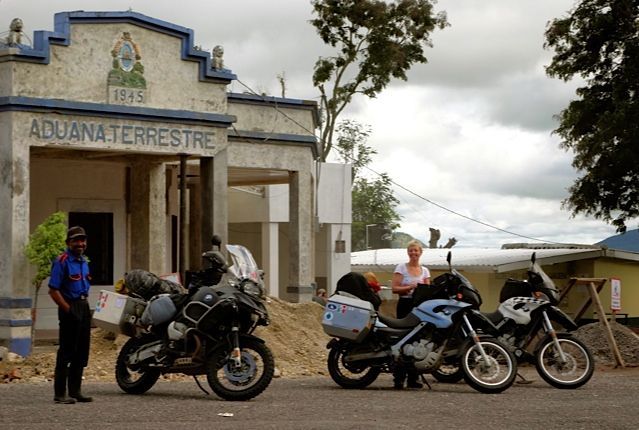
This guy is not official!
MONEY CHANGERS
The second group to approach you will be the money changers. But, in Central America where you will need local currency at borders where no ATMs exist, we've learned money changers can be your friends. Just be prepared. Know what the exchange rate is and how to calculate the rate you are getting (there's an App for that).
Rates will be higher than a bank's - you are paying for convenience, after all
- but we never felt extorted. Even if you prefer to change your money at a bank before crossing, it will likely be a tank of gas and a meal away from the border crossing so you can't change it all. You will almost always have a useless currency deep in your pockets and money changers will take it all.
At most of the border crossings in Central America you must pay to have your bike fumigated (some sanitary stuff is sprayed on your tires) at a cost of $1 or $2. It's senseless. Your bike tires will be nice and sterile, but your boots and the equipment in your panniers, not to mention the countless cats & dogs that freely run back and forth across the border won't be. ?????
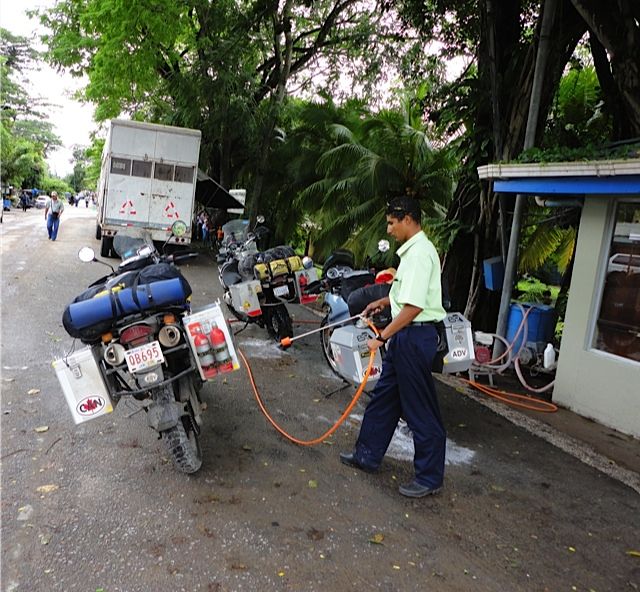
Fumigation - Costa Rica
**
**
INSURANCE
Motorcycle insurance is always an interesting topic - some riders try to seek out policies in their home country that will cover them regardless of where they travel (this was impossible to find in Canada), others let the fates decide and ride without bike insurance in developing countries.
Regardless of where you fall within this spectrum, 3rd party insurance is optional in some countries and mandatory in others. Either way, there is usually an agent at border willing to sell you insurance at a surprisingly reasonable rate. Whether it is actually worth the paper it is written on is another question. In countries where insurance is mandatory, police check points may ask you to show it. This was the case for us in Peru, which is notorious on this point.

Papers, please (El Salvador crossing)
**
**
RUN AROUND
Most of the crossings in Central American require you to complete all the steps of migracÃon and aduana at no less than 3 buildings which may or may not be well signed, may look like they recently survived a bombing campaign, and are potentially located up to 500 meters away from each other. This, and long lines with paperwork to be filled out by hand is what causes the border crossings to take so long and be exceptionally frustrating.
Since the systems will not change for you, knowing what to expect at the borders is half the battle of survivng each 3 hour ordeal. The other half is attitude and preparedness.
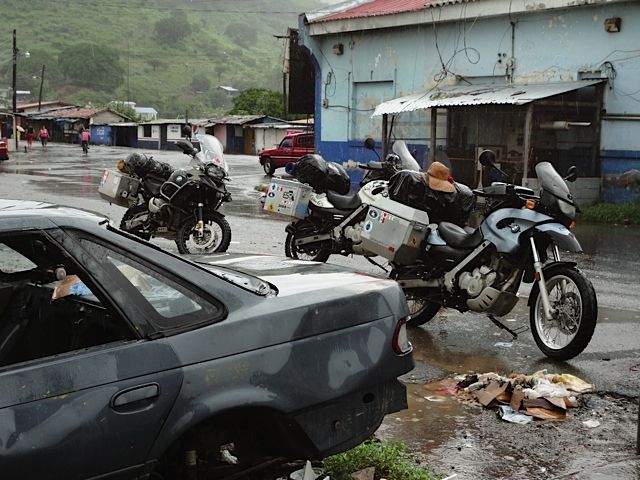
This is an official border - Honduras
**
**
TIPS & TRICKS
-
Make a number of photocopies of your documents before you leave home and bring them with you. You will need up to 3 copies of each document for each crossing. This excludes your passport, which will likely require copying after it has been stamped by migracion.
-
You may want to keep a soft copy of the entry permit you receive (we took & saved photos). It could come in handy if you loose your papers.
-
Know the exchange rates for currency changes before crossing the border and have enough cash on hand for importing the bike (CAD$30-$50), photocopies (CAD$1-5), insurance, which is mandatory in some countries (CAD$10-$70).
-
If you are travelling alone, make sure all your luggage can be locked and/or secured to your bike (pac-safe etc). Take your riding gear and helmet into the office with you and lock your steering because you will be away from your bike for a while. Since most countries don't need to see the person they are admitting, if you are a pair, one can process the border paperwork and one can watch the bike(s).
-
Learn a little Spanish or at least some key phrases that will help you out. Making an effort to speak in the local language can have a huge impact on the welcome you receive and being able to detect the words for left, right, straight ahead, return here, go there and all the numbers between 1 and 100 is priceless.
-
Smile. It's going to take a long time, so you might as well be in a good mood. They are not out to ruin your day, they are just doing the job they do it with less technology at a much lower pay than what you are used to. Just be nice.
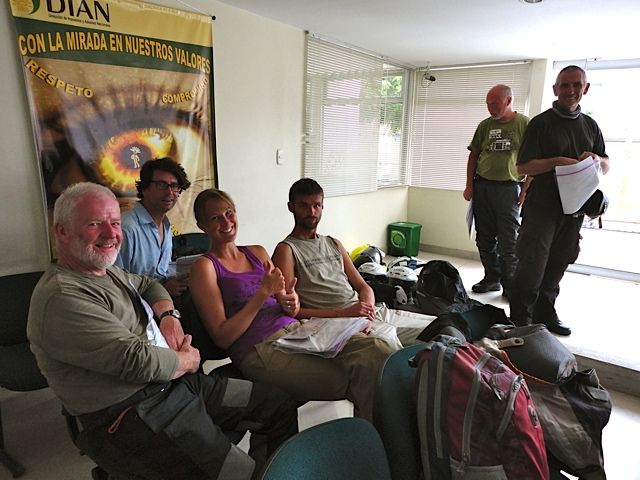
Colombia - we waited 8 hours here
CORRUPTION
We never experienced any corruption at the borders, so are unable to comment on that aspect of the crossings. We saw numerous signs directed at travellers indicating "all services in this office are provided at no cost". It is apparent that there is a strong and successful effort being made to curb corruption.
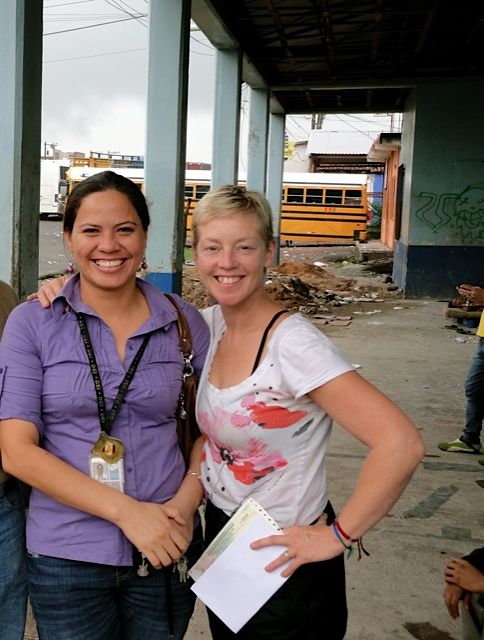
Friendly Officials at Honduran border
If you want to travel the Americas overland, which you probably do since you are reading this article, border crossings are a reality that can not be avoided. They take a long time and involve frustrating processes that are seemingly archaic. But, as with most things in life you must take the bad with the good and travelling throughout the Americas by motorbike is a most certainly 'good'.
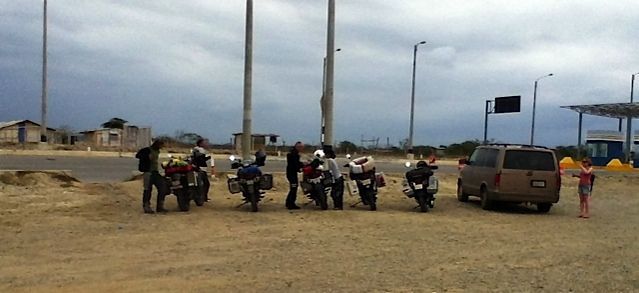
Peru border in the desert

Nicaragua's spacey-looking border
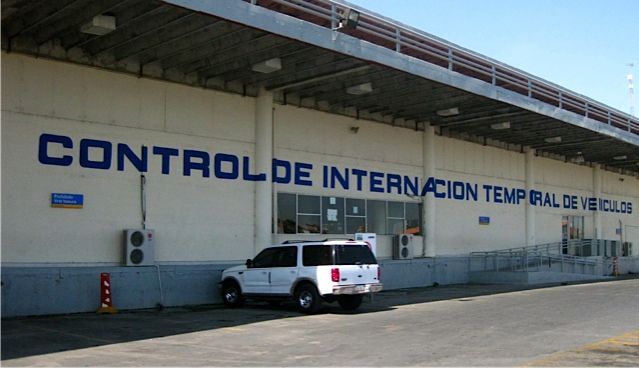
Mexico Border @ Nuevo Loredo
You must be logged in to comment
Login now